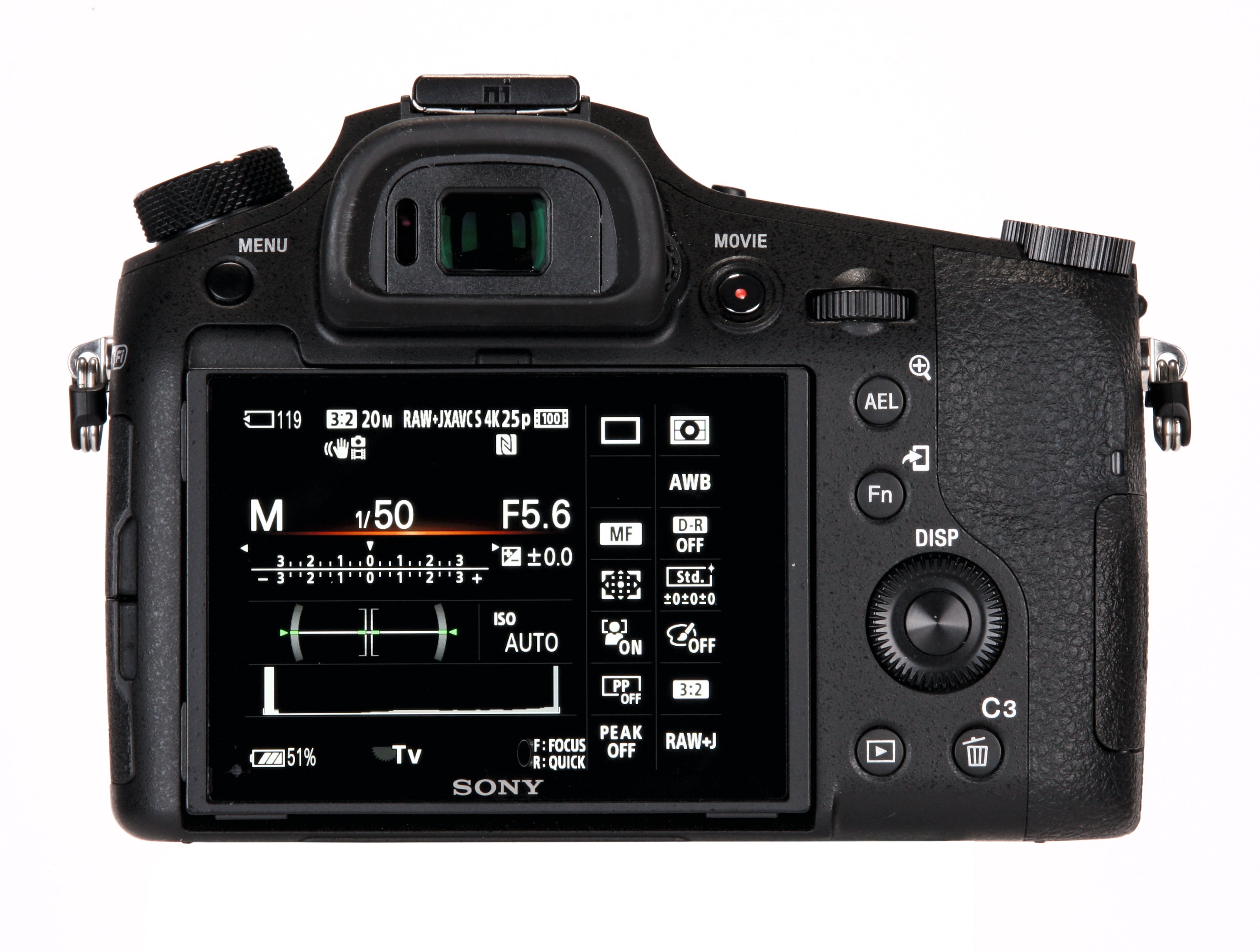Sony’s Cyber-shot RX10 line has redefined what we can expect from superzoom compacts, but can the latest in the line score the company a hat trick? Matt Golowczynski finds out in this RX10 III review
Sony Cyber-shot DSC-RX10 III review
Sony Cyber-shot DSC-RX10 III review: Viewfinder and screen

The RX10 III opts for the Mark II’s partnership of a 3in, 1,228k-dot LCD screen with a 0.39in, 2,359k-dot OLED viewfinder. Mounted on a hinge, the LCD is tiltable by 107 degrees upwards and around 42 degrees downwards. As with previous models it lacks touch sensitivity. While touch sensitivity may find itself useful in some situations, when you consider how the camera is likely to be used by its intended audience, it’s not a significant omission.
The slim screen adds little to the camera’s overall profile, while the extent to which it can be pulled away from the camera’s body makes it less susceptible to the familiar issue of being blocked by the viewfinder’s eyecup when viewed from above (such as at waist level). The LCD’s default brightness and contrast are pleasing, and its resolution is high enough for focus to be assessed when this is manually adjusted. As with many other screens, however, it benefits from a manual boost to brightness when used under harsh, midday sun.
We’ve come to expect a lot from electronic viewfinders in recent generations of cameras, but the one inside the RX10 III doesn’t disappoint. Details are clear, free from aberrations and largely free from noise, and its dynamic range appears to be wider than that of the LCD, which allows a broad range of details to be visible throughout a scene simultaneously. I also found its eye point to be at just the right level for the entire screen and the information around it to be visible at the same time. One minor issue is that that electronic viewfinder’s proximity sensor responds to movement around 3cm away from it; with the viewfinder itself extending around an inch or so from the camera’s body, it’s easy to confuse this into deactivating the LCD when unnecessary.
The menus are displayed clearly in both the viewfinder and EVF, although repeated calls for this to be overhauled for a more user-friendly interface sadly continue to be ignored. Every screen appears much like the next and options are more difficult to find than they ought to be. Even a simple colour-coded separation, which is present in some of Sony’s other models, would make a difference.




